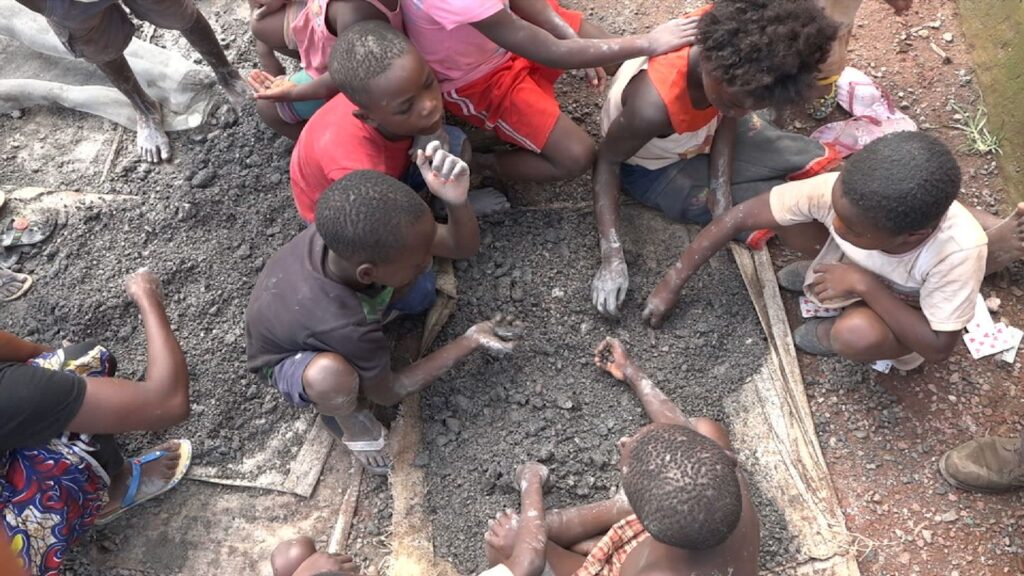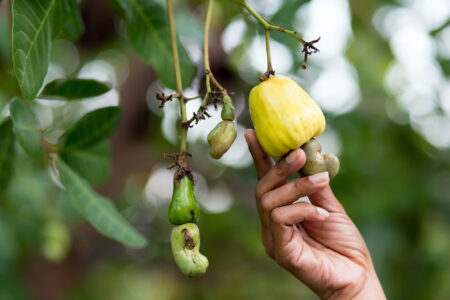- AfDB has seen over 3,235 children, originally entrenched in the exploitative DRC’s cobalt mines, receive training in agriculture practices.
- A total of 9,016 children, including 46.2% girls have been saved from the confines of DRC’s cobalt mines, liberated from the shackles of exploitation.
- AfDB is liberating DRC’s children from the exploitative cobalt mining cycle and providing them with viable alternatives for sustainable livelihoods.
In 2019, the Democratic Republic of Congo witnessed the start of a pivotal initiative to transform the lives of children and young individuals in the DRC’s cobalt supply chain.
The Support Project for the Alternative Welfare of Children and Young People Involved in the Cobalt Supply Chain, funded by the African Development Fund (AfDB) and the Transition Support Facility, was envisioned as a beacon of hope for thousands of children trapped in the perils of artisanal cobalt mining.
As the project nears its culmination in December 2024, its impact is being felt nationwide, heralding a brighter future for thousands of Congolese nationals.
With a substantial investment of US$78 million, the project embarked on a journey to rescue and rehabilitate Congolese children ensnared in hazardous mining activities. Often coerced or compelled by dire circumstances, these children found themselves toiling in perilous conditions within artisanal cobalt mines in DRC.
The initiative aimed to liberate them from this exploitative cobalt mining cycle and provide them with viable alternatives for sustainable livelihoods.
The project’s implementation and results report by the AfDB unveils a tale of transformation and empowerment. A staggering 9,016 children, including 46.2 per cent of girls, have been saved from the confines of cobalt mines, liberated from the shackles of exploitation.
Children ditching DRC’s cobalt mines for school
This milestone signifies a rescue operation and a reaffirmation of the intrinsic value of every child’s well-being and prospects.
AfDB’s project extends beyond rescue efforts, delving into skill development and capacity building. Over 3,235 young individuals, originally entrenched in the exploitative DRC’s cobalt supply chain, have received training in agriculture practices.
This shift equips them with valuable skills and cultivates sustainable livelihood opportunities, fostering resilience and self-sufficiency.
Education is another cornerstone of the project’s goals, with a resolute commitment to reintegrating children into the schooling system. Currently, 2,425 boys and 2,044 girls are ditching the exploitative DRC’s cobalt supply chain and trooping back into classrooms. This move has the potential to nurture young minds and unlock the transformative power of education.
Establishing responsible DRC’s cobalt supply chain
The impact of this initiative also embodies a profound commitment to human dignity and social justice. By rescuing children from hazardous labour, empowering youth with vocational training, and nurturing a culture of education, the project paves a pathway toward a more equitable and prosperous future for the DRC.
As the Support Project for the Alternative Welfare of Children and Young People Involved in the Cobalt Supply Chain draws to a close, is a testament to the transformative potential of collective action and unwavering commitment to the welfare of vulnerable populations.
In its wake, it leaves empowered communities, resilient individuals, and a beacon of hope for generations to come.
Raymond Eyoh Besong, who is managing the project for the AfDB, shares his thoughts on the initiative’s results. He considers that the overall objectives of improving people’s living conditions in the Lualaba and Haut-Katanga Provinces and establishing a responsible DRC cobalt supply chain will “definitely be achieved”.
Read also: Congo’s cobalt conundrum: America’s quest in a world of geopolitical tensions
Getting children out of mines is not always easy, but the project has succeeded. How did you go about it?
The project’s appraisal report included a comprehensive analysis to identify the root causes of children’s presence in mines and at artisanal mining sites. These are mainly household poverty and the inadequacy or lack of basic social infrastructure.
The project’s intervention strategy, therefore concentrated on resolving these two main causes and included all stakeholders in the project area who have been fighting to end child labour, including political and administrative authorities, civil society, the private sector, and so on.
Some of the children went straight from cobalt mines to the classroom. How did you get them back into school, and how did they adapt to the change?
The project’s holistic approach, combining children’s social reintegration (with regard to schooling, nutrition, health, psychology and civil registration) and the socio-economic transition to agribusiness for their parents, as well as awareness-raising and the many activities planned since the project appraisal such as identifying the direct beneficiaries, are the major incentives for encouraging the children to go back to school and their parents to keep them there.
The establishment of Centres for the Promotion of Youth Entrepreneurship in Agribusiness has convinced local leaders, the communities themselves and the parents of the children in question, of the project’s effectiveness, sustainability, and ownership while reassuring them that parents can maintain social responsibility for their children post-project.
Through ongoing awareness-raising initiatives, PABEA-Cobalt has constantly reminded children that their place is in school, not the mines.
The distribution of school kits (bags, exercise books, uniforms, shoes, etc.) and hygiene kits, and the payment of school fees have made it easier for the children benefitting from the project to feel that they are on an equal footing with other pupils, and for them to integrate into and adapt to other groups of children with confidence.
Nearly half of the young people earmarked for a transition to farming have followed through with it. Why have they been so keen?
These young people are very aware that artisanal mining, under the conditions in which it is carried out, is high-risk work (respiratory illnesses, skin diseases, fatal accidents due to mine collapses, etc.).
When agribusiness was presented to them as an alternative to mining, they desired to undergo training in the agriculture sector, particularly as they could also see agricultural infrastructure being built to support them in this transition.
The Bank’s appraisal report suggests that the project should be extended. What remains to be done?
We still must build and bring into operation the vocational training centres for roles in farming, artisanal mining, and tailoring and sewing, among others, and provide effective support for the agricultural cooperatives that have been set up as part of the agribusiness production activities.
The appraisal report also notes that project information was actively communicated. How has this helped you reach your target audiences?
PABEA-Cobalt developed a communication strategy and a strategic communication and awareness-raising plan to promote alternative welfare.
The project used all available communication channels — community radio stations, knocking on doors, social media, focus groups, and traditional national and local media (radio, TV, newspapers, posters, visuals, etc.) – to implement them.
Read also: Cobalt: DRC, Zambia, Tanzania to produce lithium batteries











